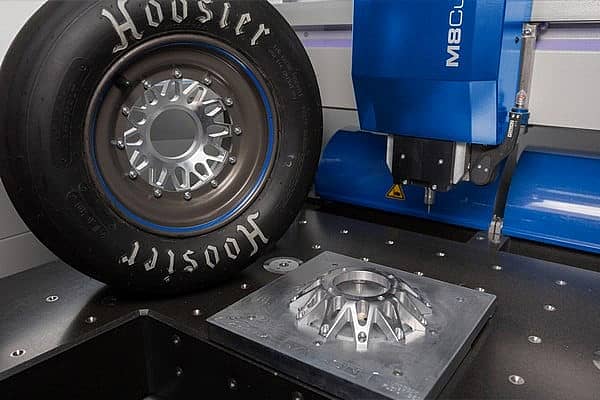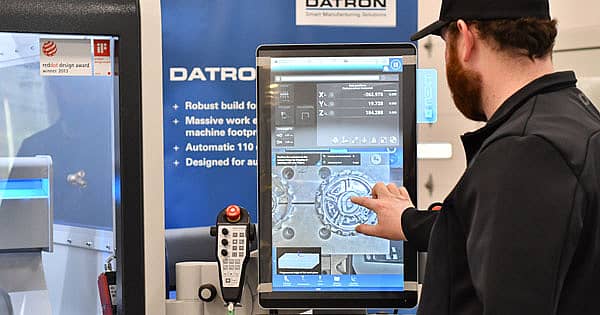
Are you thinking about pursuing a career as a CNC machinist? If you are, then you’ve come to the right place! In this article, we’ll provide you with a thorough understanding of the role of a CNC machinist. We outline the essential steps required to enter and thrive in this profession. Explore the intricacies of this field and learn typical CNC machinist requirements, equipping you with the knowledge needed to excel. Our team of experts offers practical insights on how to become a CNC machinist. Keep reading to get valuable insights for those aiming to pursue a fulfilling career in precision machining.
What is a CNC Machinist?
A CNC machinist is a skilled professional responsible for operating, maintaining, and programming CNC machines to produce precision parts and components. They work in various industries, including aerospace, automotive, electronics, medical devices, and industrial manufacturing.
One of the primary duties of a CNC machinist is to interpret technical drawings, blueprints, and specifications to understand the requirements of the part to be manufactured. They then set up the CNC machine accordingly, including loading the necessary tools, fixtures, and materials. Programming the machine involves inputting specific commands and instructions into the computer system to guide the cutting tools in shaping the workpiece to the desired dimensions and tolerances.
Attention to detail is crucial in this role, as CNC machinists must constantly monitor the machining process. Monitoring the machining process includes making adjustments to ensure quality and accuracy in the finished parts. Additionally, they are responsible for performing routine maintenance on the CNC machine to keep it in optimal working condition and troubleshoot any issues that may arise during production. Overall, CNC machinists play a vital role in the manufacturing industry, contributing their expertise to produce the precision components that form the backbone of modern technology and innovation.
Want to learn more? Check out our article “What is a CNC Machinist?”
CNC Machinist Requirements
CNC machinist requirements include a blend of technical skills, practical experience, and attention to detail. While specific requirements can vary depending on the employer and the complexity of the machining tasks involved, there are several common qualifications and attributes that employers typically look for.
First and foremost, a strong understanding of machining principles is essential. This includes knowledge of different types of materials, cutting tools, and machining techniques. CNC machinists must be able to interpret technical drawings and blueprints accurately to understand the specifications of the parts they will be manufacturing. Additionally, CAD/CAM software proficiency is often required, as it is used to create part designs and generate toolpaths for the CNC machine.
Practical experience is also highly valued in this field. Many employers prefer candidates who have completed vocational training programs or apprenticeships in machining or related fields. These programs provide hands-on experience with CNC machines and help develop the skills necessary to operate them effectively. Additionally, certifications such as the National Institute for Metalworking Skills (NIMS) credentials can validate a machinist’s skills and knowledge, making them more competitive in the job market.
Finally, good communication and teamwork skills are beneficial for CNC machinists, as they often work closely with engineers, designers, and other manufacturing team members to ensure that production goals are met efficiently and effectively. By possessing these qualifications and attributes, CNC machinists can excel in their roles and contribute to the success of their organizations in the highly competitive manufacturing industry.
Read More: What is CNC Precision Machining?
How to Become a CNC Machinist
A series of steps encompassing education, training, gaining practical experience, and job-seeking are all part of knowing how to become a CNC machinist. Although not all of these steps may necessarily be required for some employers, here’s a comprehensive guide on how to pursue this career path from start to finish:
Step 1: Obtain a High School Diploma or Equivalent
Obtaining a high school diploma or GED is a crucial first step in becoming a CNC machinist. This education lays the groundwork for the technical skills and knowledge required in the field. High school courses in mathematics, particularly algebra and geometry, are essential since they are directly applicable to understanding and performing precise measurements and calculations involved in CNC machining. Additionally, classes in computer science and shop provide early exposure to the principles of machinery and computer operations, both of which are integral to CNC work. A solid educational foundation enhances your ability to grasp more advanced concepts in CNC machining and makes you a more competitive candidate for further training programs, apprenticeships, and entry-level positions.
Step 2: Enroll in a Technical or Trade School
Enrolling in a technical or trade school is vital for aspiring CNC machinists, as it provides specialized education and hands-on training essential for the role. To begin, research accredited schools that offer CNC machining programs, focusing on their curriculum, facilities, and industry connections. After identifying potential schools, review their admission requirements, which typically include a high school diploma or GED. Complete the application process by submitting necessary documents, such as transcripts and letters of recommendation, and possibly attending an interview or placement test. Many schools also offer financial aid options, so explore scholarships, grants, and loan opportunities to support your education. Once admitted, immerse yourself in courses that cover CNC programming, machine tool technology, blueprint reading, and CAD/CAM software, as these will equip you with the technical skills needed to excel in the CNC machining field.
Step 3: Gain Practical Experience
Gaining practical experience is crucial for becoming a proficient CNC machinist, as it bridges the gap between theoretical knowledge and real-world application. This hands-on experience can be acquired through internships, apprenticeships, or entry-level positions in manufacturing environments. Many technical and trade schools have partnerships with local industries, providing students with opportunities to work alongside experienced machinists during their studies. In these roles, you will learn to operate CNC machines, troubleshoot issues, interpret technical drawings, and adhere to safety protocols. Practical experience not only enhances your technical skills but also helps you develop problem-solving abilities and a deeper understanding of production processes, making you a more competent and confident CNC machinist. You can always practice at home if you have access to a machine or are brave enough!
Check out what you can make with a CNC Machine.
Step 4: Obtain Certification
Obtaining certifications is a significant step in becoming a CNC machinist. Certifications validate your skills and knowledge, making you more attractive to employers. Organizations such as the National Institute for Metalworking Skills (NIMS) offer industry-recognized certifications. This certificate demonstrate your proficiency in various aspects of CNC machining. These certifications cover areas such as CNC milling and turning, programming, and maintenance. To earn a certification, you typically need to pass both a written exam and a practical performance assessment. This assessment proves your ability to operate CNC machinery effectively and safely. While not always mandatory, these certifications can enhance your job prospects, lead to higher earning potential, and provide a competitive edge in the job market by showcasing your commitment to professional development and industry standards.
Step 5: Seek Employment
Seeking employment as a CNC machinist involves leveraging your education, practical experience, and certifications to find suitable job opportunities within the manufacturing industry. Start by preparing a comprehensive resume that highlights your technical skills, hands-on experience, and any certifications you have obtained. Utilize job search platforms, industry-specific job boards, and local community college career services to identify openings. Networking is also crucial, connecting with professionals in the field through industry associations, job fairs, and social media platforms like LinkedIn. Tailor your job applications to match the specific requirements of each position and be prepared to discuss your technical proficiency and problem-solving abilities during interviews. By actively engaging in the job search process and showcasing your qualifications, you can secure a position as a CNC machinist and begin your career in this dynamic and technologically advanced field.
Becoming a CNC machinist involves a structured pathway that starts with obtaining a high school diploma or GED, followed by enrolling in a technical or trade school to gain specialized education. Practical experience through internships, apprenticeships, or entry-level positions is essential for honing your skills in a real-world setting. Acquiring certifications from recognized organizations further validates your expertise and enhances your employability. Finally, a proactive approach to seeking employment, networking, and tailoring your job applications will help you secure a position in this rewarding field. By following these steps, you can build a solid foundation for a successful career as a CNC machinist, equipped with the skills and knowledge to excel in the manufacturing industry.
Careers at DATRON Dynamics!
If CNC machining is something you are passionate about, a great place to start is working for a company that produces high-speed CNC machines, such as DATRON Dynamics. At DATRON Dynamics you can engage with state-of-the-art CNC milling machines and software systems. Working with these machines further expands your knowledge in how to become a CNC machinist. Here you will understand the industries that utilize this technology and develop a deeper understanding of a CNC machinist requirements in the field. By joining DATRON Dynamics, you can be a part of a forward-thinking team that pushes the boundaries of machining technology, providing solutions to those in the manufacturing industry. Develop your skills, learn more about CNC machining, and grow in this supportive environment. Learn more about our career opportunities today!







